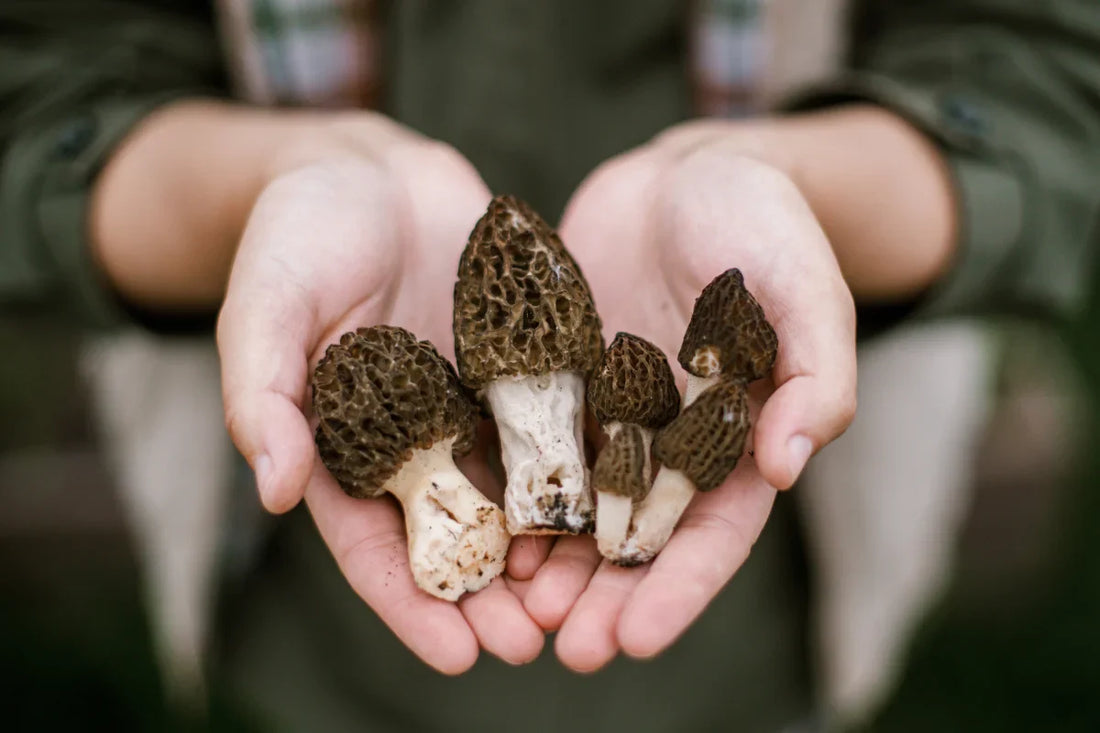
How to Grow Morel Mushrooms: Step-by-Step Guide for Beginners
How to Grow Morel Mushrooms: A Complete Guide
Introduction to Morel Mushrooms
Morel mushrooms are a highly sought-after delicacy known for their rich, earthy flavor and unique honeycomb-like appearance. While they are often foraged in the wild, growing morel mushrooms at home is possible, though it requires patience and the right environmental conditions. This guide will walk you through the steps to successfully cultivate morel mushrooms in your own backyard or garden.
Why Grow Morel Mushrooms?
Growing morel mushrooms at home can be a rewarding experience for mushroom enthusiasts. Not only do morels fetch a high price in the market, but they also offer a unique and gourmet flavor to your culinary dishes. Additionally, cultivating your own morel mushrooms allows you to enjoy this rare mushroom grow kit without the need for foraging, which can be unpredictable.
Understanding Morel Mushroom Growth Cycles
Before diving into the cultivation process, it's important to understand that morels have a unique life cycle. Unlike many other mushrooms, morels require specific conditions to fruit, including seasonal temperature changes and adequate moisture. Morels typically appear in the spring after a period of cold winter weather, which helps trigger their growth.
Types of Morel Mushrooms
There are several types of morel mushrooms, but the most commonly cultivated varieties include:
- Black Morels (Morchella elata): These morels are known for their dark, conical caps and are often the first to appear in early spring.
- Yellow Morels (Morchella esculenta): Yellow morels have a lighter, honeycomb-like appearance and are the most commonly foraged variety.
- Half-Free Morels (Morchella punctipes): These morels have a cap that is only partially attached to the stem, giving them a distinctive shape.
Step-by-Step Guide to Growing Morel Mushrooms
1. Preparing the Growing Environment
Morels prefer well-drained, sandy, or loamy soils with a slightly acidic pH. They thrive in areas with deciduous trees such as elm, ash, or apple trees. If you’re growing morels in your garden, select a shady spot that mimics the forest floor.
- Soil Preparation: Add organic matter such as compost, leaf litter, or wood ash to the soil to create a nutrient-rich environment.
- pH Levels: The ideal soil pH for morels is between 6.0 and 7.0. You can adjust the soil pH by adding lime to raise it or sulfur to lower it.
2. Sourcing Morel Mushroom Spores or Spawn
To grow morels, you'll need to obtain morel mushroom spores or spawn from a reputable supplier. You can use either a spore slurry (a mixture of spores and water) or morel mushroom spawn, which is more reliable and easier to work with for beginners.
- Spore Slurry: This involves soaking morel mushroom spores in water and using this liquid to inoculate the soil.
- Mushroom Spawn: Spawn is a pre-colonized material, such as sawdust or grain, that contains mycelium. It’s easier to use and more likely to produce successful results.
3. Planting the Morel Spores or Spawn
Once you have your spores or spawn, it’s time to inoculate your growing area:
- Spore Slurry Method: Pour the spore slurry over the prepared soil, ensuring that the area stays moist but not waterlogged.
- Spawn Method: If using spawn, mix it into the top few inches of the soil. Spread it evenly across the growing area and water it lightly to encourage colonization.
4. Maintaining the Growing Area
Morels require specific conditions to thrive, so it’s important to maintain the proper environment as they grow:
- Watering: Keep the soil consistently moist, especially during dry periods. Morels require humidity to fruit, so regular watering is key.
- Temperature: Morels typically fruit when daytime temperatures are between 60-70°F (15-21°C) and nighttime temperatures are between 40-50°F (4-10°C).
- Mulching: Add a light layer of mulch, such as straw or wood chips, to help retain moisture and provide insulation during cooler months.
5. Patience and Waiting
Growing morel mushrooms can take time, and it’s not uncommon for them to take one to two years to fruit after the initial inoculation. During this time, continue to maintain the growing area by watering and keeping an eye on the soil conditions.
6. Harvesting Morel Mushrooms
Morels are ready to harvest when they reach a height of 2-4 inches and have a firm texture. Gently twist or cut the mushrooms at the base, being careful not to disturb the surrounding soil. It’s important to leave some morels behind to ensure future growth and to allow the spores to spread for future harvests.
Tips for Growing Morel Mushrooms Successfully
- Mimic Nature: Morels thrive in environments that resemble the natural forest floor. Add organic matter, fallen leaves, and even rotting wood to the growing area.
- Monitor Moisture: Morels need a consistent level of moisture to fruit. Avoid overwatering, but ensure the soil remains damp during dry spells.
- Use Shaded Areas: Morels prefer cool, shaded areas. If growing outdoors, plant them under trees or in a location that receives filtered sunlight.
- Be Patient: It can take time for morels to establish and fruit. Keep the growing area well-maintained and be prepared to wait one or two seasons for your first harvest.
Frequently Asked Questions
- Can morel mushrooms be grown indoors? While it’s possible, growing morels indoors is difficult and requires precise environmental control. Morels are better suited to outdoor cultivation where they can mimic natural conditions.
- How long do morels take to grow? It can take up to two years for morels to fruit after planting. They typically fruit in the spring following a cold winter period.
- Where do morels grow best? Morels grow best in shady, cool environments with well-drained, nutrient-rich soil. They are often found near trees, especially elm, ash, and apple trees.
